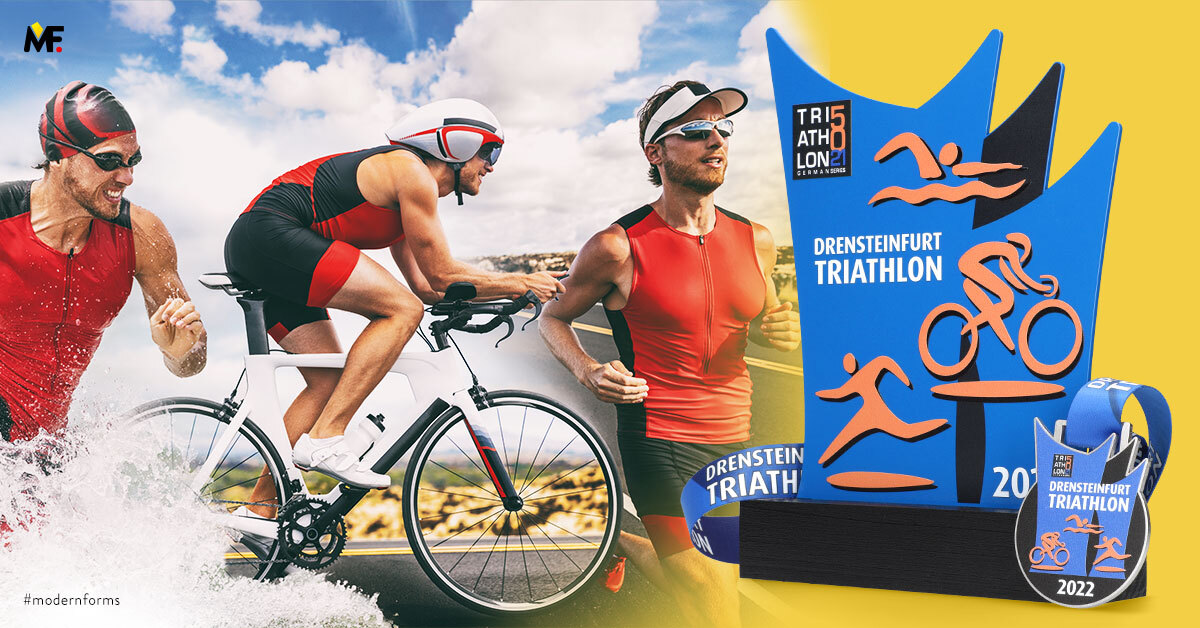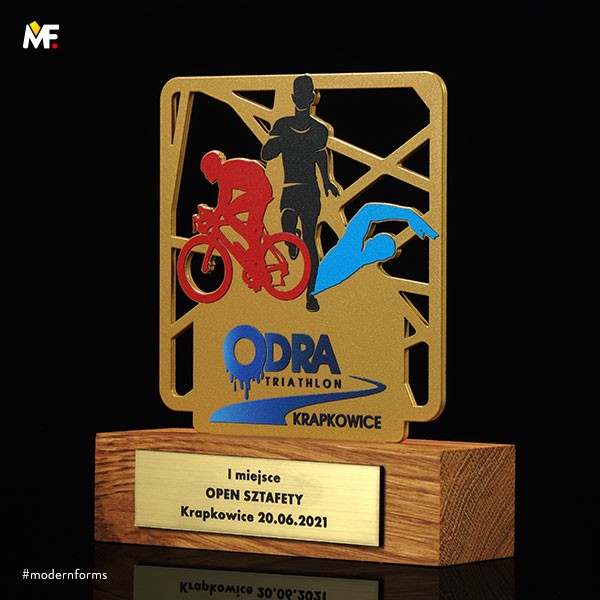
Medals for triathlon – when running is not enough


If sport is your life and your hangers are already loaded down with running medals – it’s time to take the next step and participate in a triathlon. It’s a versatile sport that consists of swimming, cycling and running for specific distances in a sequence. The distances to be covered vary depending on the competition chosen. However, one thing is certain – a medal for participating in a triathlon is a real treat for a sports enthusiast.
Triathlon combines the three most popular sports. There is a swimming stage at the beginning, another is cycling and then running. No wonder, it is used as a promotion of physical activity. What counts in the competition is the athlete’s speed and endurance. The time of the competitor is counted from the start to crossing the finish line, which means that the moments when the competitor replaces the equipment or gets changed are also added to the result.
The competitions take place at various distances.
Triathlon events take place all over the world, and some of the most grueling ones are those with an increased distance or held on a course with a high degree of difficulty (e.g. rocky ground, lots of hills, bodies of water with low temperatures). The most difficult triathlons include Celtman!(Scotland), Ironman 70.3 UK (UK), Alpe d’Huez (France), Ironman Lanzarote (Spain).
Every triathlon competition is governed by slightly modified rules, but the main principles do not change:
Remember, the final interpretation of the rules rests with the organisers and the competition rules vary slightly.
During the swimming section, the use of any equipment other than a swimming cap and goggles is forbidden. An exception is the swimming suit if the water temperature on the day of the competition is below 20.5 degrees Celsius. The athlete may stop in the water, hold the buoy, but may not push off.
The rider must wear a helmet when cycling. In the event of a breakdown, the rider may carry or push the bike, but may not complete this stage without the bike. During this section it is forbidden to ride in groups or to use equipment and techniques that reduce the air drag.
The last distance on the cross-country course can be covered in any way the athlete wishes - they can run forward, backward or march. A competitor cannot: run with a helmet on his head, barefoot, crawl or in any way be assisted by others (e.g. run assisted by helpers on the competition course).
You don’t have to be the athlete with the best time to win a medal in a triathlon competition. Usually, the organisers reward participants just for taking part and completing the course – after all, even for professionals, receiving awards is a very important moment of the race.
Triathlon competitions are becoming increasingly popular. Every month at least a few big triathlon competitions take place in Poland. Therefore, it is not surprising that competition organisers resign from traditional medals cast in metal in favour of colourful awards, in an eco spirit, with an original shape or with a wow effect (rotating elements, medals glowing in the dark). The popularisation of triathlon in a way forces one to distinguish a particular competition from others, and participation medals are perfect for this.
At Modern Forms we know exactly how to make it the medal from your triathlon event that shines in an athlete’s collection.
Usually the commemorative medals feature elements referring to all three triathlon disciplines. Most often it is a silhouette of a swimmer, a cyclist and a runner. A medal designed in this way is suggestive, immediately associated with specific struggles.
However, triathlon medals do not have to be a boring disc. They can take any shape, shine with a whole palette of colours, have openwork cut-outs, spatial and/or movable elements. Medals for triathlon competitions can also take the form of a jigsaw puzzle – where each component symbolises a different part of the race.
You can prepare one medal design for all participants in triathlon competitions or differentiate them e.g. in age categories.

It will also be nice to add a trophy for winning the triathlon to your considerable collection of awards. Organisers often distinguish competitors with the best time in this way – all participants receive medals, and only the best, in addition to medals, are awarded with unique statuettes. The trophy for the winner, just like the medals, does not have to be boring at all. The more interesting shape, the greater chance that the competition will be perceived as prestigious and worth attention. They will also stay in the competitors’ memory for longer.
The trophies can refer to the graphics and shape of the medals – thus creating a triathlon set. You can combine different materials in the trophies or opt for ecological or recycled materials.
This website uses cookies, thanks to which our website may work better. READ MORE